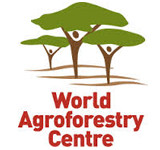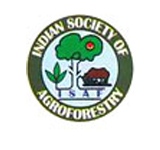
Vigyan Bhavan & Kempinski Ambience
10 - 14 February 2014
Delhi, India
blog

Can trees strengthen and improve people lives? Can trees play a bigger role?
Yes, trees are lifeline for the ecosystem we live in. This statement can be supported, because 1.2 billion people in the world are following Agroforestry practices.
In the recent years, many initiatives have been taken to promote indigenous tree species providing marketable food, fodder and agro forestry tree products. But I feel that revamping of traditional systems and adding little bit sugar will stir up technologies whereby we can go in harmony with nature.
Here I would like to share the story of one important traditional pasture system i.e. in existence in Kangeyam tract of Tamil Nadu. Centuries back farmers in kangeyam tract engaged in farming of dry land crops and some of the land portions were left unfarmed.
After the receipt of rain, the nature flourished with vegetation. Farmers were left with only option of grazing their animals in the vegetated (unfarmed) area. Later on, it became a usual habit and they found it as effective way of grazing animals. They ploughed the land once in three years and planted legumes in order to enrich nutrient status of soil.
Acacia leucophloea and Albizzia amara is the common tree that occupies the pasture land (35-40 trees/ha) with sufficient space for grasses like Cenchrus. Live fences were maintained around pasture land. They also followed rotational system of grazing .When there is no grasses, livestocks feed on tree pods. Drinking water provisions were provided to livestock by establishing cement trough in pasture area.
As days passed, farmers gained knowledge of sound management practices. Soon they realized trees, grasses, shrubs and livestock as their part of routine life. As a result they were enjoying directly and indirectly many benefits like quality fodder, income, maintaining the fertility of land and other environmental services.
I happened to hear from one farmer (women) whose is managing this system effectively: She was happy to attend trainings conducted by government which enriches their knowledge, income and their livelihood opportunities. She was ready to take home the content of training outcome and share it with other farmer friends .
These type of training had enlighten them about importance of trees and the benefits enjoying from it. Therefore, it provides income security, conserves ground water table, improves the ecology of the region, preserves local culture, beliefs and customs, encourages participation of people and as a whole improves lifestyle of farmers, thereby giving life to trees and trees for life without which the term sustainability becomes question mark.
“The Earth, The Air, The Land And The Water Are Not An Inheritance From Our Fore Fathers But On Loan From Our Children. So We Have To Handover To Them At Least As It Was Handed Over To Us”.
-Mahatma Gandhi
Photo: Natural grazing area of Kangeyam Tract, Tamil Nadu
Blogpost by Keerthika, Scientist (P) – NAARM (Hyderabad, India) – lathikaconifers(at)gmail.com
and Sangram Chavan, Scientist, National Research Centre for Agroforestry (Jhansi, India) – Sangramc8(at)gmail.com
Photo courtesy The Hindu
|
This post is entry nr #44 in our #WCA2014 blog competition. The five blogposts with the most and highest votes will receive a signed copy of the book "Trees for Life". The most popular blogpost will get an iPad.
This blogpost received 75 votes, with an average score of 5 (out of a max of 5).
Follow our #WCA2014 social reporting teamfollow our social reporting team via the #WCA2014 tag on Twitter, our blog and our Facebook page.
|






46 People have left comments on this post
Happy to be the very first voter to this blog-addressing fodder for livestock among other benefits of silvipasture system.
good
Traditional systems like the one practiced in Kangeyam need to be replicated elsewhere as per feasibility. Amalgamation of traditional wisdom and modern technological interventions in Agroforestry can go miles in augmenting productivity of land. This blog makes for a good read!
nice one..
Informative article regarding the Silvipasture system….
Highlighting the traditional system of Agroforetsry, great work by keerthika and co
I am frequent travelor in this area. True they live with this system
Very good. Keep going..
Good article. Our forefathers have developed agricultural and allied agricultural activities through hundreds of years of trial and error. Most of the times, the socio -economic & technologist appraisal by farmers or govt or scientists are ignorant of this factor. The author has rightly analysed the ancient practices using technological prism. Spatial divergence of agro practices needs to be compiled and evaluatedo. If done so, the acceptance of such practices would be easier and voluntary basis. Kudos to the author for highlighting the importance of overlooked agri practices. Hope many would come up with such analysis.
creative effort…
Great Post Keerthi…
good one.. keep going,, all the best!!
Its very nice information about the potential tree species viz. Acacia leucophloea and Albizzia amara in silvipasture system.
This is system of effective management. The same system can be easily replicated in dry tracts. Good information. all the best.
Nice ..Every innovative farming methods came from the farmers’ efforts ..This is one of its kind make this justified..Still more traditional practices of people needed to be roped in..Go on.. Nice job..
Traditional & Indigenous systems are the most valuable & vulnerable one which needed to be handed over safely to posterity…Acacia’s & Albizzia’s are good source of fodder, which can immensely reduce the impact of grazing on virgin forest… Great work by the Budding Scientist Keerthika….
well done. It is news for me to know that 1.2 billion people in the world are following Agroforestry practices. Nice to read. Keep it up.
Good afford.
Nice…..
Perfect example of the confluence of indigenous knowledge and conscious scientific efforts. Worth emulating for all…. Kudos to Keerthika for coming out with such an informative blog.
nice thought for landless labours………..those who dont have land and having animal husbandary as a lively wood………
grassing land fatches lot for them……………………
one of the best traditionl reviewed .
Gud effort..
Thank you all.. I feel very happy to receive good comments. As I have just started my career as scientist(p) on January 1,2014. I feel that i am on right track and feel proud that i got this opportunity.. It gives me zeal to perform best in future..Thank you once again..
good work… congrats
very good information to all the farmers
A good beginning! Expect more such articles!
Good one, Go ahead., All The very best……..
Great piece of information Keerthika. Certainly many farmers will be benefited by technolology driven traditional knowledge. Simple and sober…..
all the best..
GOOD MESSAGE OF TRADITIONAL GRASS LAND HOW EVOLVED…..AND HOW IT WAS ENRICHED THE NUTRIENT STATUS IN SOIL……………..
ya excellent thought of rural areas……..how the animals will rare by depending on grazing land
nice one..
ALL THE BEST …
good effort keerthi…. keep it up
nice.. korangadu make kangeyam bull as very strong draught animal feeding of acacia leucopholea (velamaram), Cenchrus ciliaris (kolukkattai)
This traditional practice can be worth replicated everywhere. Authors saying, life to trees and trees for life is very true
One of the primitive popular agroforestry system in Tamilnadu is being practiced at Kangeyam area mixed with
Acacia leucopholea. Very excellent effort taken by Keerthika to popularize this agroforestry system in national level to replication of this system. I wish to her effort to successs…………..
Nice piece of information. This method of agroforestry is traditionally developed with the people and area. These people knew the science of adaptation to dry conditions.
A good start…. Good luck with your career…..
I accept this
I could support this
Good work and nice information sis..
Nice article sis..
Agroforestry was traditionally practiced in many parts of the tropics. Most traditional agroforestry species and techniques have not yet been subject to institutional scientific experiments. However, they have been well-tested by local farmers, often over many generations. These traditional systems and species can provide a strong, locally-based framework for future agroforestry development.
good effort..
First of all thanks to giving these information as new technique… Its very nicely you have presented I feel proud about you to be as scientist in agroforestry discipline. its really very nice.
Its really nice and very informative. Keep it up. All the very best..